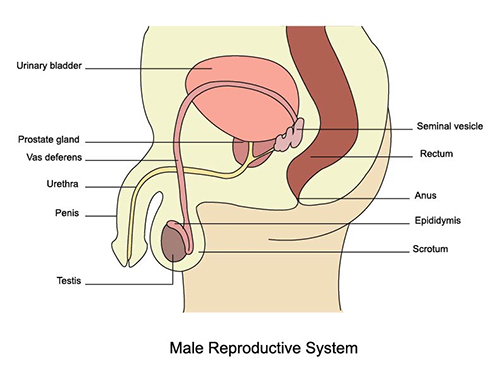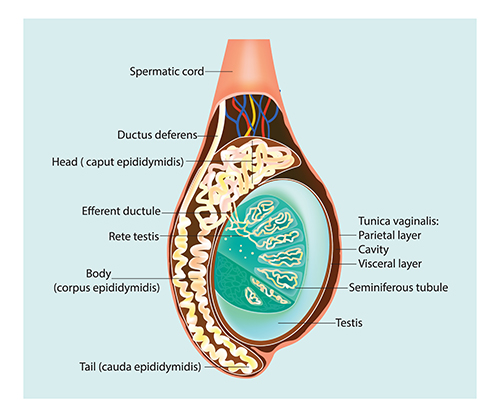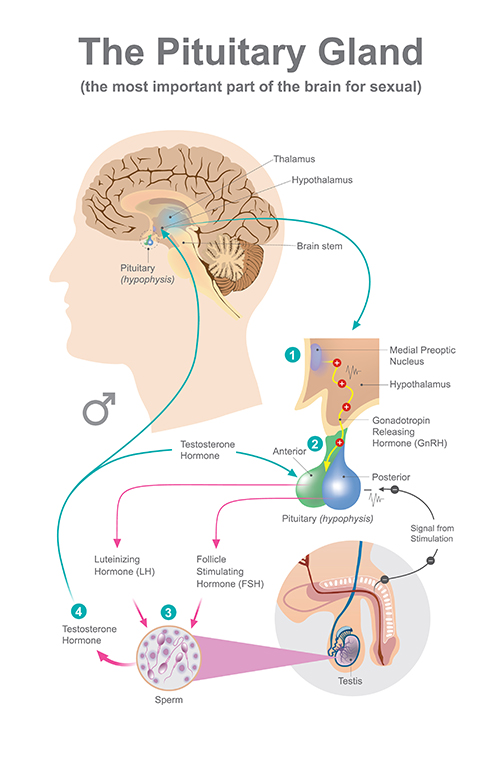Sperm is made in the testis within very small tubes known as seminiferous tubules. Seminiferous tubules lead to larger tubes that deliver sperm to the vas deferens and ultimately, to the tube that runs through the penis known as the urethra. Secretions from the prostate gland and seminal vesicles empty into the urethra where they mix with sperm, collectively forming the semen that is released from the penis at ejaculation.


Sperm production in testis is stimulated by Follicle Stimulating Hormone (FSH). FSH is produced by the pituitary gland, which is located at the base of the brain. Another pituitary hormone, Luteinising Hormone (LH), leads to the production of the male hormone, testosterone, from a special type of cell in the testes known as Leydig cells. Testosterone is important for masculinity, sex drive, muscle development and male pattern hair growth and is also needed for sperm production. The production of both FSH and LH are stimulated by another hormone, gonadotrophin-releasing hormone (GnRH), produced by the hypothalamus in the brain.

